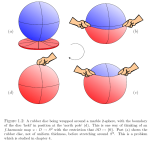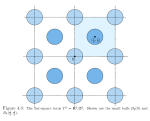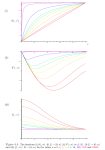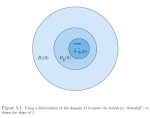f-Harmonic Maps
Thesis submitted for the degree of Doctor of Philosophy.
Supervised by Peter Topping
Mathematics Institute, University of Warwick,
Coventry, CV4 7AL, UK.
September 2004
Abstract
A study of f-harmonic maps and f-harmonic heat flow.
The first chapter gives the definitions of $f$-harmonic maps and heat flow; namely the critical points of the energy functional $E_f(u):=\frac{1}{2} \int_\mathcal{M} f |\nabla u|^2 ~d\mathcal{M}$ (for a compact surface $\mathcal{M}$) and the $L^2$--gradient flow of this energy. The first and second variations of $E_f$ are calculated, and previously known $f$-harmonic results are stated.
In section 2.1, we see that a smooth $f$-harmonic map of finite energy, defined on the disc minus one point, smoothly extends to the whole disc. Section 2.2 investigates: Given an $f$-harmonic map $u$ and another function $f_1$ "close" to $f$, is there an $f_1$-harmonic map "close" to $u$? By the Implicit Function Theorem, the answer is "yes if" we have a hypothesis on the Jacobi Operator.
Chapter 3 studies the $f$-harmonic map heat flow, and extends the existence and "bubbling" result of Struwe to $f$-harmonic map heat flow.
A result of Lemaire ("every harmonic map from a compact, contractible surface, with constant boundary data must be constant") is considered in chapter 4. The $f$-harmonic map heat flow yields examples demonstrating that this result doesn't extend completely to $f$-harmonic maps. There is however an analogue for certain $f$. A particular sequence of $f_n$-harmonic maps ($D \to S^2$, $\partial D \mapsto \{0\}$) is studied, with $f_n \to 1$, to try to see how an $f$-harmonic map might need to be varied (so as to remain $f$-harmonic) if the $f$ is "flattened" towards $f\equiv 1$.
The main result of this thesis is given in chapter 5: Every infinite time 'bubble' point in $\interior\M$, must be a critical point of $f$. A hypothesized refinement, that infinite time bubbles only form at minima of $f$, is false (chapter 6). However bubbles forming at finite times can form at non-critical points of $f$.
Finally, chapter 7 briefly describes a possible application of this theory.




